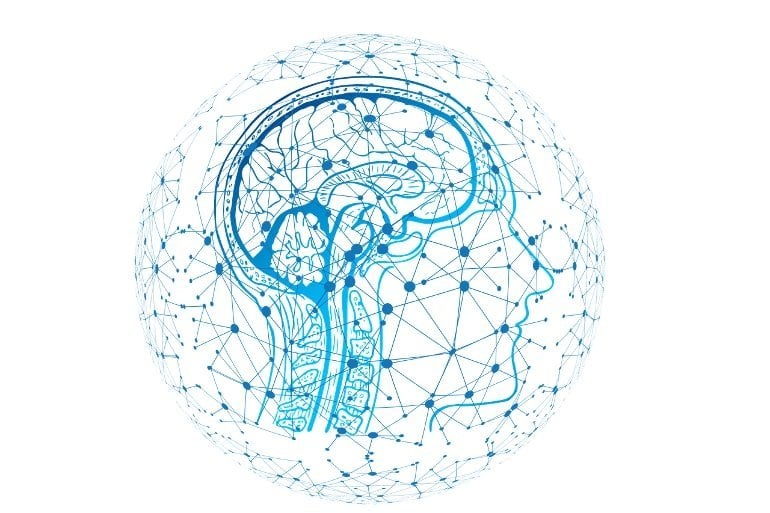Summary: Using ECG data, a new machine learning algorithm was able to predict death within 5 years of a patient being admitted to hospital with 87% accuracy. The AI was able to sort patients into 5 categories ranging from low to high risk of death.
Source: University of Alberta
If you’ve ever been admitted to hospital or visited an emergency department, you’ve likely had an electrocardiogram, or ECG, a standard test involving tiny electrodes taped to your chest that checks your heart’s rhythm and electrical activity.
Hospital ECGs are usually read by a doctor or nurse at your bedside, but now researchers are using artificial intelligence to glean even more information from those results to improve your care and the health-care system all at once.
In recently published findings, the research team built and trained machine learning programs based on 1.6 million ECGs done on 244,077 patients in northern Alberta between 2007 and 2020.
The algorithm predicted the risk of death from that point for each patient from all causes within one month, one year and five years with an 85 percent accuracy rate, sorting patients into five categories from lowest to highest risk.
The predictions were even more accurate when demographic information (age and sex) and six standard laboratory blood test results were included.
The study is a proof-of-concept for using routinely collected data to improve individual care and allow the health-care system to “learn” as it goes, according to principal investigator Padma Kaul, professor of medicine and co-director of the Canadian VIGOUR Centre.
“We wanted to know whether we could use new methods like artificial intelligence and machine learning to analyze the data and identify patients who are at higher risk for mortality,” Kaul explains.
“These findings illustrate how machine learning models can be employed to convert data collected routinely in clinical practice to knowledge that can be used to augment decision-making at the point of care as part of a learning health-care system.”

A clinician will order an electrocardiogram if you have high blood pressure or symptoms of heart disease, such as chest pain, shortness of breath or an irregular heartbeat. The first phase of the study examined ECG results in all patients, but Kaul and her team hope to refine these models for particular subgroups of patients.
They also plan to focus the predictions beyond all-cause mortality to look specifically at heart-related causes of death.
“We want to take data generated by the health-care system, convert it into knowledge and feed it back into the system so that we can improve care and outcomes. That’s the definition of a learning health-care system.”
About this AI research news
Author: Ross Neitz
Source: University of Alberta
Contact: Ross Neitz – University of Alberta
Image: The image is in the public domain
Original Research: Open access.
“Towards artificial intelligence-based learning health system for population-level mortality prediction using electrocardiograms” by Padma Kaul et al. npj Digital Medicine
Abstract
Towards artificial intelligence-based learning health system for population-level mortality prediction using electrocardiograms
The feasibility and value of linking electrocardiogram (ECG) data to longitudinal population-level administrative health data to facilitate the development of a learning healthcare system has not been fully explored. We developed ECG-based machine learning models to predict risk of mortality among patients presenting to an emergency department or hospital for any reason.
Using the 12-lead ECG traces and measurements from 1,605,268 ECGs from 748,773 healthcare episodes of 244,077 patients (2007–2020) in Alberta, Canada, we developed and validated ResNet-based Deep Learning (DL) and gradient boosting-based XGBoost (XGB) models to predict 30-day, 1-year, and 5-year mortality. The models for 30-day, 1-year, and 5-year mortality were trained on 146,173, 141,072, and 111,020 patients and evaluated on 97,144, 89,379, and 55,650 patients, respectively. In the evaluation cohort, 7.6%, 17.3%, and 32.9% patients died by 30-days, 1-year, and 5-years, respectively.
ResNet models based on ECG traces alone had good-to-excellent performance with area under receiver operating characteristic curve (AUROC) of 0.843 (95% CI: 0.838–0.848), 0.812 (0.808–0.816), and 0.798 (0.792–0.803) for 30-day, 1-year and 5-year prediction, respectively; and were superior to XGB models based on ECG measurements with AUROC of 0.782 (0.776–0.789), 0.784 (0.780–0.788), and 0.746 (0.740–0.751).
This study demonstrates the validity of ECG-based DL mortality prediction models at the population-level that can be leveraged for prognostication at point of care.







